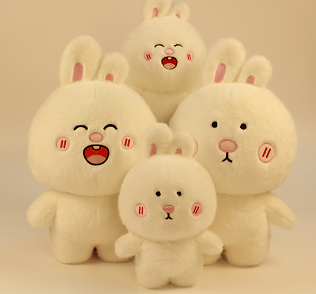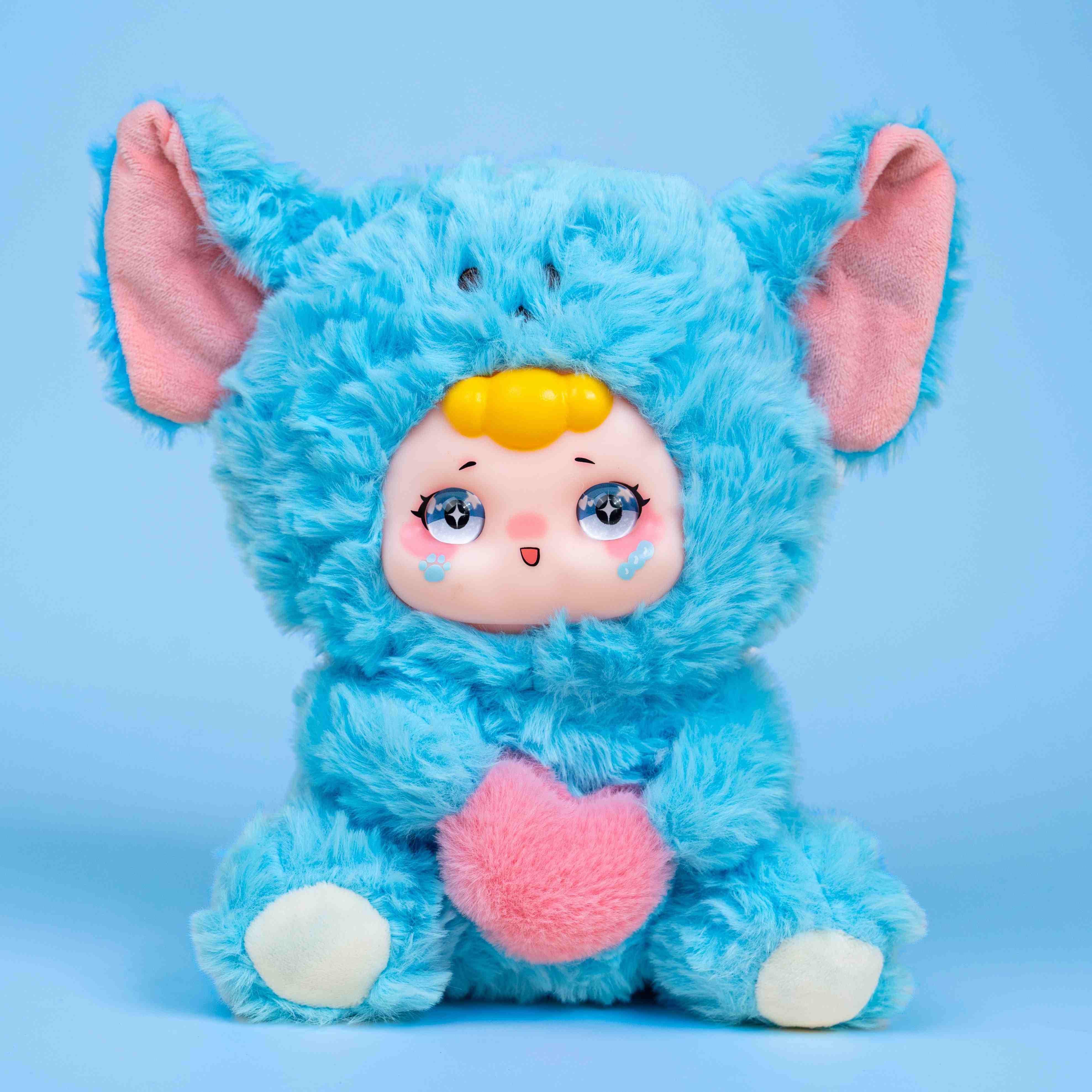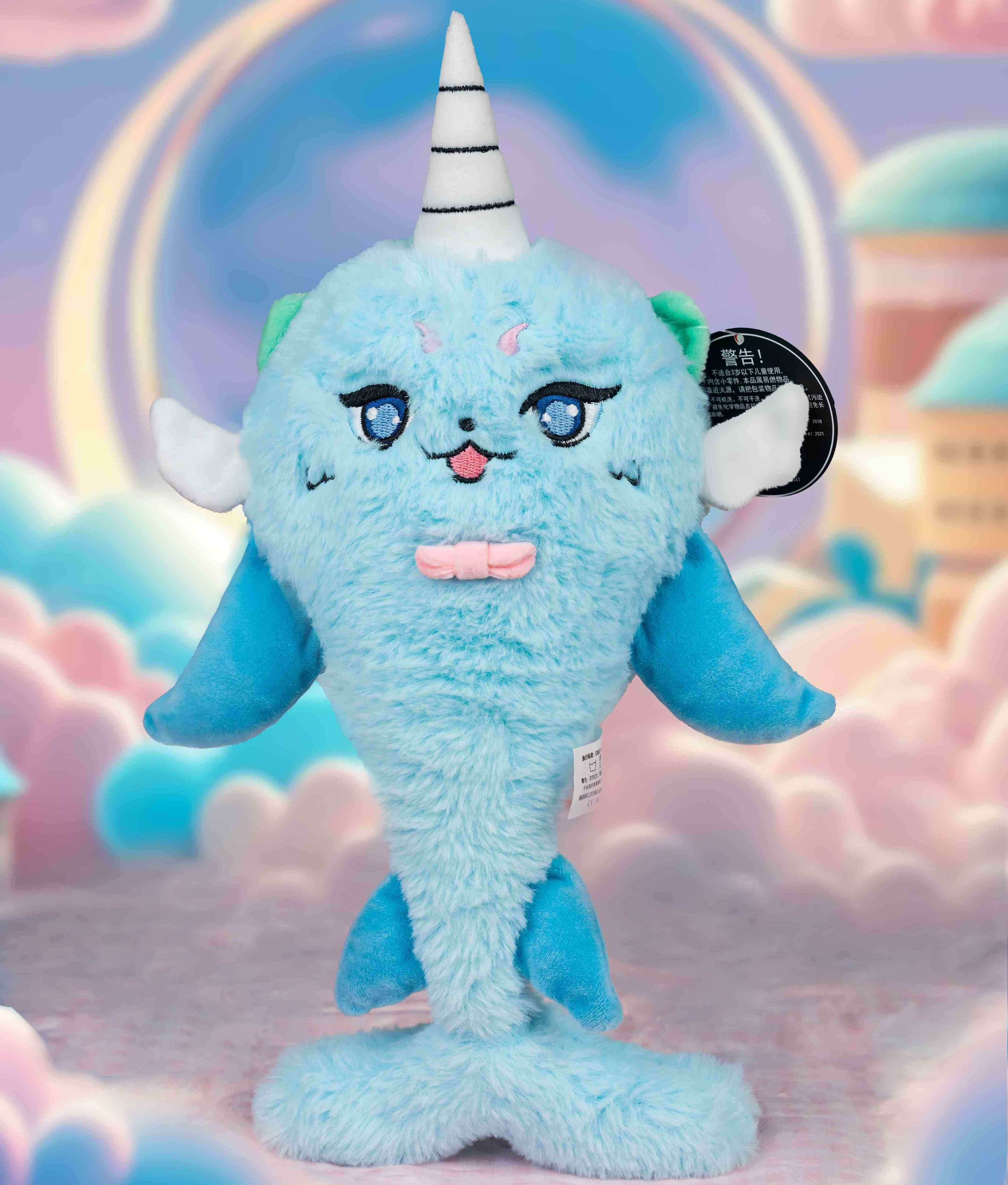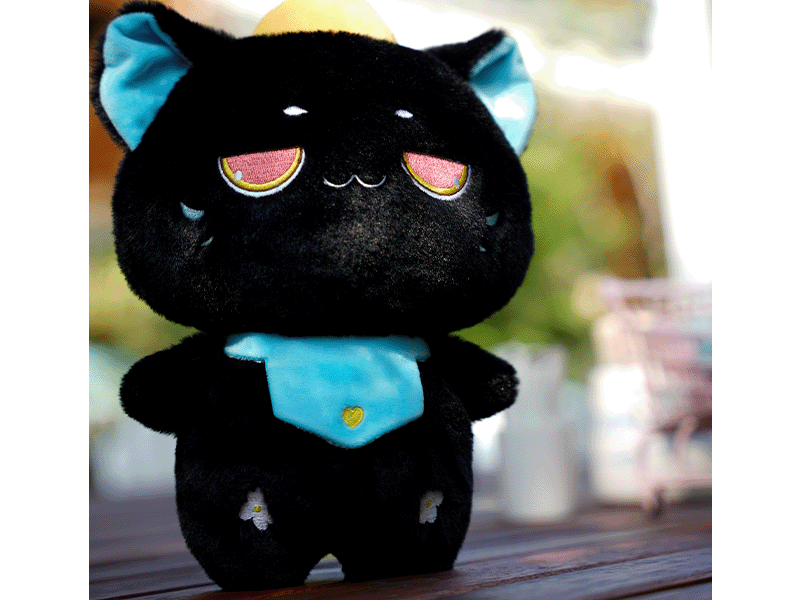Stuffed toys are more than cute companions—they are often a baby's first emotional support object. As such, they must meet the highest standards of safety, hygiene, and durability. Parents and gift buyers aren't just looking for something soft; they're seeking toys that are completely safe for delicate skin, free from harmful substances, and constructed to withstand the chewing, tugging, and washing that come with infant use.
This article outlines the key elements to consider when choosing a plush toy suitable for babies. Whether you're a parent, retailer, or product developer, understanding these safety factors will help you make smarter, safer choices.
1. Prioritize Non-Toxic, Hypoallergenic Materials
Babies naturally explore with their mouths, which makes material safety essential. The fabrics and fillings used in baby plush toys must be gentle, chemical-free, and suitable for sensitive skin.
Look for:
Organic cotton: Naturally soft, breathable, and free from pesticides or synthetic finishes.
Bamboo fiber: Known for its antibacterial properties and silky texture.
OEKO-TEX® or GOTS certification: These confirm that the materials are free from harmful substances like formaldehyde, lead, and phthalates.
Hypoallergenic stuffing: Typically high-quality polyester fiberfill or organic cotton fiber, which reduces the risk of allergic reactions and prevents mold buildup.
Avoid plush toys with artificial scents, shiny coatings, or fabrics that feel stiff to the touch—these may indicate chemical treatments not safe for infants.
2. Confirm Compliance with International Safety Standards
Reputable plush toys will always comply with established safety regulations. Certifications help ensure that toys are chemically and mechanically safe for infants.
Key certifications to look for:
ASTM F963 (USA): Covers toy safety, flammability, and chemical content.
CPSIA (USA): Ensures toys are lead- and phthalate-free and properly labeled.
EN 71 (EU): Divided into parts, including mechanical safety, flammability, and chemical composition.
ISO 8124 (international): Applies to countries that follow global standards for children's toys.
Manufacturers that publish these certifications publicly or provide lab reports demonstrate transparency and product reliability. If this documentation is missing, it's a red flag.
3. Avoid Small or Detachable Parts
Infants under three years old are especially vulnerable to choking hazards, which often come from overlooked details.
Avoid:
- Plastic eyes, noses, or buttons: These can detach over time and pose a choking risk.
- Loose accessories: Ribbons, beads, hats, or clothing can come off or wrap around fingers.
- Glued-on features: Adhesive can weaken after multiple washes or chewing.
Choose:
- Embroidered details: Facial features should be stitched directly into the fabric.
- Minimalist design: The fewer loose components, the safer the toy.
Even if a toy seems well-made, remember that repeated play and washing can weaken attachments over time. Simpler designs age better—and safer.
4. Ensure Durable Construction and Reinforced Stitching
Soft toys for babies endure a lot—constant grabbing, chewing, drooling, and laundering. That means their construction must go beyond basic stitching.
Look for:
- Double or triple-stitched seams: Especially at high-stress points like limbs and ears.
- One-piece bodies: Fewer seams mean fewer failure points.
- Securely attached limbs: Arms, legs, tails, and ears should feel firm, not floppy or loose.
- Internal sound units (if any): Must be fully enclosed within inner linings and meet safety standards.
Avoid toys with:
- Wireframes or bendable parts: These may break or poke through the fabric.
- Velcro fasteners: Often wear out quickly and collect lint and bacteria.
- Reinforced construction not only improves longevity—it prevents hazardous damage during play.
5. Select the Right Size, Shape, and Weight
A toy that's too big can be overwhelming, while one that's too small can become a choking risk. For babies, especially those under 12 months, size and shape are important.
What to consider:
- Ideal size: Should fit comfortably in a baby's hands—typically 15–25 cm (6–10 inches).
- Lightweight: Heavier toys could fall onto a baby's face and interfere with breathing.
- Smooth, rounded shapes: Avoid sharp edges, long limbs, or narrow strings that can tangle or restrict movement.
- No weighted filling: While popular in sensory toys for older kids, weighted stuffing is unsafe for infants.
A well-designed plush toy should feel safe and manageable in a baby's arms—even when they roll on top of it or fall asleep mid-play.
6. Check for Washability and Hygiene Features
Babies put everything in their mouths—and soft toys are no exception. Regular cleaning is essential to prevent the growth of bacteria, dust mites, and allergens.
Look for:
- Machine-washable tags: The toy should tolerate cold or gentle cycle washing without deforming.
- Colorfast fabrics: Prevents dye bleeding during washing.
- Quick-drying materials: Reduces the chance of mold or mildew forming inside the toy.
- Simple construction: Avoid toys with built-in electronics or inserts that can't be removed before washing.
Toys that require dry cleaning or hand-washing may look pretty, but they are not practical or hygienic for infants. Easy maintenance is part of overall safety.
7. Breathability and Flammability Should Not Be Ignored
Though a plush toy may not seem dangerous, poor breathability or high flammability can increase hidden risks.
Best practices:
- Low-pile fabrics: Allow better airflow and reduce suffocation risk if the toy is pressed against a baby's face.
- Flame-retardant materials: Ensure the toy doesn't easily catch fire. Must meet ASTM F963 or EN 71-2 flammability standards.
- No synthetic glues or finishes: Some treatments used to improve durability can raise flammability concerns.
While stuffed toys should never be left in cribs overnight, ensuring they're breathable and flame-safe adds an extra layer of security.
Why Ngwantoy Is the Go-To Supplier for Safe Plush Toys
As a trusted original plush toy manufacturer, Ngwantoy specializes in baby-safe stuffed toys with both quality and compliance at the core of its product line.
What makes Ngwantoy different:
- Certified Materials: All plush fabrics used for infant toys are OEKO-TEX® or GOTS certified, ensuring freedom from harmful substances.
- Comprehensive Testing: Products pass ASTM F963, EN 71, and CPSIA compliance standards with full documentation available.
- Baby-Focused Design: Embroidered features, seamless construction, and minimal accessories are standard on all baby-targeted designs.
- Hygienic and Durable: Every toy is machine-washable, colorfast, and built with reinforced seams for long-term use.
Whether you're a brand sourcing private-label baby toys or a parent looking for safe plush gifts, Ngwantoy delivers both creative design and peace of mind.
Conclusion
When it comes to babies, nothing should be left to chance—especially not the toys they hold close. A baby-safe plush toy must be more than cute and cuddly. It must be thoughtfully engineered for safety, built with certified materials, and able to withstand real-life use. Every stitch, seam, and fiber matters.
By understanding what to look for—non-toxic materials, safety certifications, strong construction, proper sizing, and easy maintenance—parents and buyers can ensure that a baby's first toy is a source of joy, not risk. And when choosing a supplier, trust those like Ngwantoy who blend creativity with accountability.
Softness should never come at the expense of safety. The right plush toy offers both.




